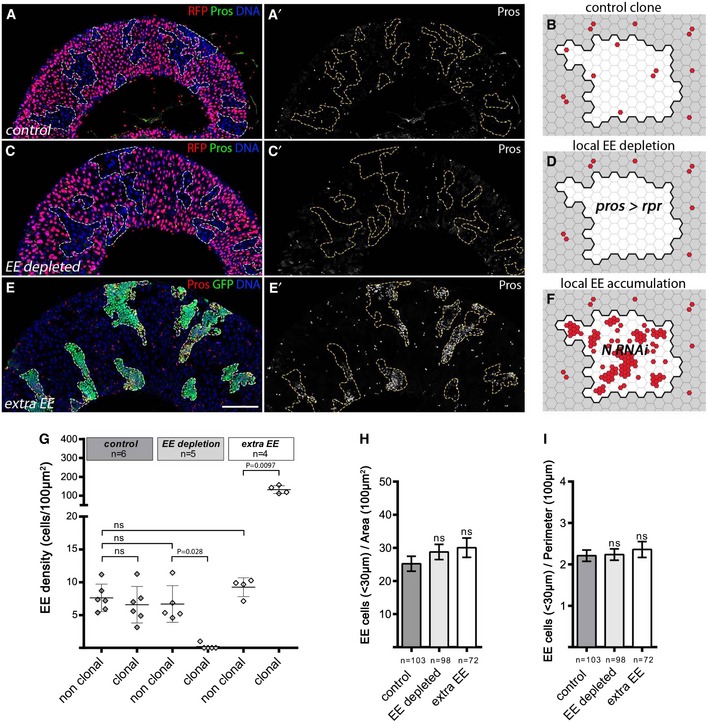A–F(A, C, E) Adult posterior midguts containing control clones, those lacking EEs, or with extra EEs (clones outlined), observed 10 days after heat shock (AHS). Images are compiled tile scans stitched together in Zen software. In (A, C), we used a modified MARCM technique in which ProsGal4 was clonally activated when GAL80 was clonally lost through FLP/FRT‐mediated mitotic recombination. Clones were detected by the loss of RFP baring Gal80 chromosome. Scale bar = 100 μm. (A) Control wild‐type clones marked by lack of RFP expression, DNA in blue, and EE cells marked by Pros in green. (B) Schematic view of (A) with EE cells represented in red and clone delineated in black and shown in white. (C) EE depletion by clonal expression of rpr under the control of prosGal4 using the GAL80 system in negatively marked clones (lacking RFP expression and GAL80 expression). (D) Scheme of (C). (E) EE accumulation in MARCM clones (green) expressing RNAi against Notch. DAPI in blue, EE cells marked through Pros, in red. (F) Scheme of (E).

